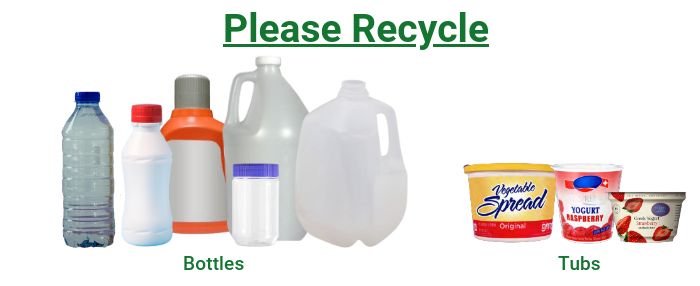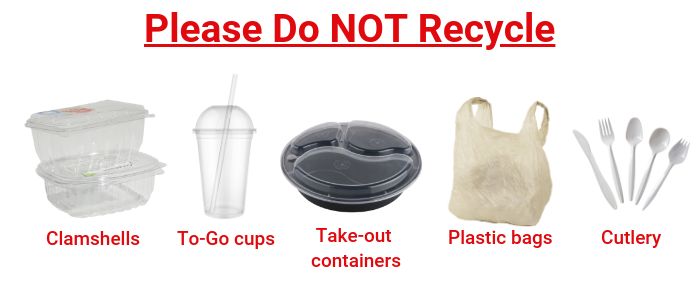Plastics Explained
Plastic you can recycle on campus
Items shaped like a bottle or tub. There's no need to look for the number on the item you want to recycle, just make sure it's a bottle or a tub.
What’s a bottle or tub?
Bottles:
- The neck of the container is smaller than the body of the container and accepts screw-type or snap on cap closures.
- Usually contains liquids.
- Examples: water bottles, milk jugs, laundry detergent bottles
Tubs:
- A tub is a container that is circular, oblong, or square.
- It may have an unattached snap-on lid or cover.
- Examples: butter, sour cream, cottage cheese, yogurt containers.

Clamshells are NOT tubs
Plastic containers with a hinged top (called clamshells) that are used for takeout, prepackaged fresh fruits or vegetables, and other foods are NOT considered tubs.
Plastic you can’t recycle on campus
- Plastic cutlery
- Plastic bags
- Plastic containers with a hinged top (called clamshells)
- Plastic to-go cups (including Starbucks)
- Plastic straws
- Plastic toys

How do I make the biggest impact with my recycling?
Recycling works best when you avoid placing contaminants in the recycle bin. There are two main types of contaminants in the recycling stream:
- items placed in the bin that aren’t accepted, and
- items that are accepted but aren’t rinsed or wiped of food/liquid residue.
When in doubt, keep it out.
Don't recycle anything you aren’t certain is accepted or clean enough. Fewer contaminants in the recycling stream means accepted recyclables are processed efficiently and safely.
The classic 3 "R's"—reduce, reuse and recycle—are in that order intentionally. You can have a bigger impact by first reducing the amount of plastic items you use, then reusing plastic items you already have, and finally recycling used plastic items.
